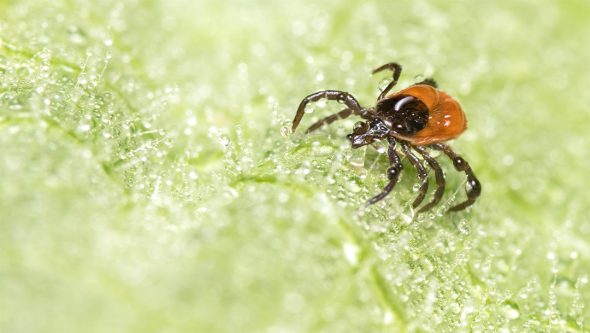
Photo courtesy of the University of Virginia
Ohio tick numbers on the rise
- Published: July 1, 2023
For many local readers, the warmer months mean lots of time spent outdoors, enjoying all that a verdant Ohio offers in the summer.
With that in mind, local residents are also cautioned to be on the lookout for the small menaces that can put a damper on warm weather fun: Ticks are most active in the summer.
According to the Ohio Department of Health, or ODH, website, blacklegged (deer) tick populations are expanding in the state. These ticks are well-known for spreading Lyme disease, an illness caused by an infection of Borrelia burgdorferi bacteria. As blacklegged tick populations rise, so have cases of Lyme disease in recent years: According to a press release from the ODH this week, there were 552 cases reported in 2022, and 121 have been reported so far this year.
Though mature ticks can carry diseases, most cases of Lyme disease are transmitted through the bites of ticks in the immature nymph stage, when they’re less than two millimeters in size and more difficult to spot and remove than mature ticks. Nymphs are also more active during the summer, where mature ticks are most active in the cooler months.
Ticks are often picked up in wooded and brush-filled areas, putting hikers, campers and folks with green thumbs at greater risk of picking up a tiny hitchhiker. To reduce the risk of tick bites, the ODH recommends that Ohioans:
• Avoid wooded and brushy areas with high grass and leaf litter.
• Walk in the center of hiking trails.
• Use insect repellents registered by the U.S. Environmental Protection Agency labeled for use against ticks on exposed skin for protection that lasts several hours.
•Tuck pant legs into socks or boots and tuck shirts into pants to keep ticks on the outside of clothing.
• Wear light-colored clothing, where ticks will be spotted more easily.
If you find a tick attached to your skin, according to the ODH, the best way to remove it is to use fine-tipped tweezers to grasp the tick as close to the skin’s surface as possible. Pull away from your skin with steady, even pressure. Afterward, wash your hands and the bite area with soap and water.
If a tick bite occurs, folks are advised to watch for symptoms such as fever/chills, aches and pains or rash, and consult with a healthcare provider if these symptoms occur.
For more information on ticks and the diseases they can carry, go to odh.ohio.gov/ticks.
The Yellow Springs News encourages respectful discussion of this article.
You must login to post a comment.
Don't have a login? Register for a free YSNews.com account.















No comments yet for this article.